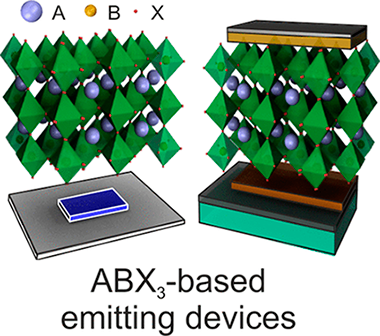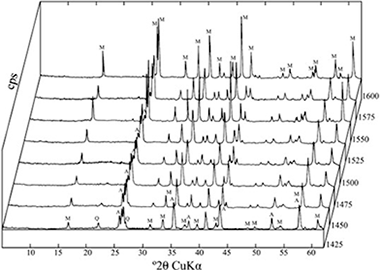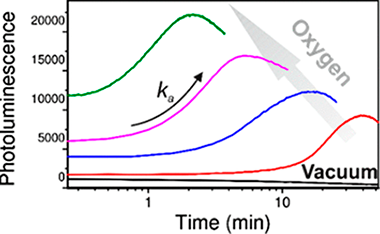Artículos SCI
2018
2018
Química de Superficies y Catálisis
Hydrodeoxygenation of vanillin over carbon supported metal catalysts
Santos, JL; Alda-Onggar, M; Fedorov, V; Peurla, M; Eranen, K; Maki-Arvela, P; Centeno, MA; Murzin, DYApplied Catalysis A-General, 561 (2018) 137-149
Show abstract ▽

Different carbon supported metal catalysts were synthesized, and characterized with various physico-chemical methods and tested in vanillin hydrodeoxygenation under 30 bar total pressure in water as a solvent at 100 degrees C. The catalysts exhibited high specific surface area and the metal dispersion decreased in following order: Pt/ C > Pd/C > Au/C > Rh/C > Ru/C. The most active catalyst was Pd/C followed by Ru/C. Vanillin hydrodeoxygenation proceeded via hydrogenation forming vanillyl alcohol further to its hydrogenolysis forming p-creosol. Both hydrogenation and hydrogenolysis were promoted by Pd/C, which exhibited rather high dispersion. The highest selectivity to p-creosol, 95% at complete vanillin conversion, was obtained with Pd/C. Kinetic modelling of vanillyl alcohol selectivity as a function of vanillin conversion was performed.
Julio, 2018 | DOI: 10.1016/j.apcata.2018.05.010
Materiales Ópticos Multifuncionales
The Role of Metal Halide Perovskites in Next-Generation Lighting Devices
Lozano, G.Journal of Physical Chemistry Letters, 9 (2018) 3987-3997
Show abstract ▽

The development of smart illumination sources represents a central challenge for current technology. In this context, the quest for novel materials that enable efficient light generation is essential. Metal halide compounds with perovskite crystalline structure (ABX(3)) have gained tremendous interest in the last five years since they come as easy-to-prepare high performance semiconductors. Perovskite absorbers are driving the power-conversion-efficiencies of thin film photovoltaics to unprecedented values. Nowadays, mixed-cation, mixed-halide lead perovskite solar cells reach efficiencies consistently over 20% and promise to get close to 30% in multijunction devices when combined with silicon cells at no surcharge. Nonetheless, perovskites' fame extends further since extensive research on these novel semiconductors has also revealed their brightest side. Soon after their irruption in the photovoltaic scenario, demonstration of efficient color tunable-with high color purity-perovskite emitters has opened new avenues for light generation applications that are timely to discuss herein.
Julio, 2018 | DOI: 10.1021/acs.jpclett.8b01417
Materiales Avanzados
The effect of vitreous phase on mullite and mullite-based ceramic composites from kaolin wastes as by-products of mining, sericite clays and kaolinite
Sanchez-Soto, PJ; Eliche-Quesada, D; Martinez-Martinez, S; Garzon-Garzon, E; Perez-Villarejo, L; Rincon, JMMaterials Letters, 223 (2018) 154-158
Show abstract ▽

Mullite precursors were prepared using kaolin waste, sericite clay containing kaolinite and industrial kaolin with addition of alumina in a wet medium to synthesize mullite (72 wt% Al2O3 and 28 wt% SiO2). Uniaxial pressed bars of the powdered mullite precursors were fired in the range 1400-1600 degrees C with soaking times 30-120 min. The resultant materials were studied by XRD and SEM-EDX. Bulk densities, apparent porosities and flexural strengths in four points were determined in the fired bars at 1500, 1550 and 1600 degrees C. It was concluded that the thermal behaviour of these mullite precursors was influenced by the presence of impurities in the raw materials. These impurities originate a liquid phase forming a glassy phase which produces a progressive and enhanced densification of the mullite materials by reaction sintering at 1500-1600 degrees C. The technical properties were also influenced by the relative proportion of vitreous phase. The microstructure of characteristic mullite crystals was revealed by SEM. It was emphasized the use of kaolin waste by-products of mining and sericite clays as valuable raw materials for mullite preparation.
Julio, 2018 | DOI: 10.1016/j.matlet.2018.04.037
Fotocatálisis Heterogénea: Aplicaciones
Photo/Electrocatalytic Properties of Nanocrystalline ZnO and La–Doped ZnO: Combined DFT Fundamental Semiconducting Properties and Experimental Study
Ahsaine, A.H.; Slassi, A.; Naciri, Y.; Chennah, A.; Jaramillo‐Páez, C.; Anfar, Z.; Zbair, M.; Benlhachemi, A.; Navío, J.A.Chemistry Select, 3 (2018) 7778-7791
Show abstract ▽
This work reports the synthesis of nanocrystalline ZnO and 5% La‐doped ZnO (La/ZnO) materials for photo/electrocatalytic degradation of Rhodamine B. The samples were characterized by X‐Ray diffraction, scanning and transmission electron microscopy, X‐Ray photoelectron spectroscopy and diffuse reflectance spectra. The effect of La doping on electronic structure was investigated using density functional theory calculations (DFT), La‐doped ZnO showed an n‐type metallic nature compared to pristine ZnO and La doping creates occupied states within the band gap edge. Under UV light, La/ZnO showed higher kinetic constant and efficiency than ZnO. A possible mechanism was elaborated on the basis of DFT and active trapping measurements. Different initial Rhodamine B concentration were studied to assess the electro‐oxidation of RhB. The electrochemical degradation of RhB over La/ZnO spindles electrode was pronounced with three time's high kinetic constant. The superior electro/photoactivity of La/ZnO was due to its unique morphology, high charge separation of the charge carriers and higher conductivity induced by La‐doping (intermediary levels). Superoxide ions and holes were the main active species for the photodegradation. Whereas, synergetic effect of hydroxyl radicals and hypochlorite ions were responsible of the high RhB electrocatalytic degradation.
Julio, 2018 | DOI: 10.1002/slct.201801729
Materiales Ópticos Multifuncionales - Nanotecnología en Superficies y Plasma
Origin of Light-Induced Photophysical Effects in Organic Metal Halide Perovskites in the Presence of Oxygen
Anaya, M; Galisteo-Lopez, JF; Calvo, ME; Espinos, JP; Miguez, HJournal of Physical Chemistry Letters, 9 (2018) 3891-3896
Show abstract ▽

Herein we present a combined study of the evolution of both the photoluminescence (PL) and the surface chemical structure of organic metal halide perovskites as the environmental oxygen pressure rises from ultrahigh vacuum up to a few thousandths of an atmosphere. Analyzing the changes occurring at the semiconductor surface upon photoexcitation under a controlled oxygen atmosphere in an X-ray photoelectron spectroscopy (XPS) chamber, we can rationalize the rich variety of photophysical phenomena observed and provide a plausible explanation for light-induced ion migration, one of the most conspicuous and debated concomitant effects detected during photoexcitation. We find direct evidence of the formation of a superficial layer of negatively charged oxygen species capable of repelling the halide anions away from the surface and toward the bulk. The reported PL transient dynamics, the partial recovery of the initial state when photoexcitation stops, and the eventual degradation after intense exposure times can thus be rationalized.
Julio, 2018 | DOI: 10.1021/acs.jpclett.8b01830
- ‹ anterior
- 162 of 420
- siguiente ›














